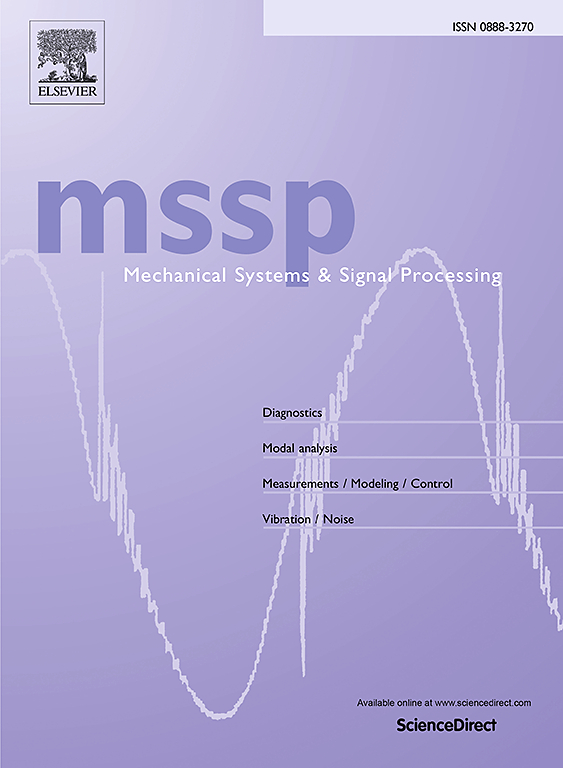An inverse-forward dynamics for real-time operational clamping force prediction of BLAC Motor
IF 7.9
1区 工程技术
Q1 ENGINEERING, MECHANICAL
引用次数: 0
Abstract
This study presents an inverse-forward dynamics for clamping force prediction of brushless AC (BLAC) motor attached to motor driven power steering system (MDPS) in operational condition. The clamping force that is important to safety as well as NVH is difficult to experimentally measure during the operation, and electro-magnetic force that is a main loading condition of MDPS has also a lot of uncertainties in the system level. In this work, equivalent bearing force is employed as a replacement for the electromagnetic force, and it is indirectly predicted by using measurable acceleration data in the manner of inverse source identification. The clamping force between the BLAC motor and the supporting structure is then computed by the forward time integration algorithm. A new inverse-forward dynamic formulation combining implicit generalized- time integrator and Tikhonov regularization is introduced to get the equivalent bearing forces and the clamping forces from noisy acceleration data. Model updating of the BLAC motor and the test bed is also necessary to accurately compute the force components through the proposed inverse-forward process. Among the various reduced-order modeling (ROM) techniques, Craig-Bampton component mode synthesis (CB-CMS) is employed. CB-CMS that has modal-nodal Degrees of Freedom (DOFs) in the reduced system matrices allows direct coupling between measured data and desired force data in the physical domain as well as efficient force computation. The accuracy and efficiency of the proposed process are evaluated through experiments with the BLAC motor test bed.
求助全文
约1分钟内获得全文
求助全文
来源期刊

Mechanical Systems and Signal Processing
工程技术-工程:机械
CiteScore
14.80
自引率
13.10%
发文量
1183
审稿时长
5.4 months
期刊介绍:
Journal Name: Mechanical Systems and Signal Processing (MSSP)
Interdisciplinary Focus:
Mechanical, Aerospace, and Civil Engineering
Purpose:Reporting scientific advancements of the highest quality
Arising from new techniques in sensing, instrumentation, signal processing, modelling, and control of dynamic systems
 求助内容:
求助内容: 应助结果提醒方式:
应助结果提醒方式:


